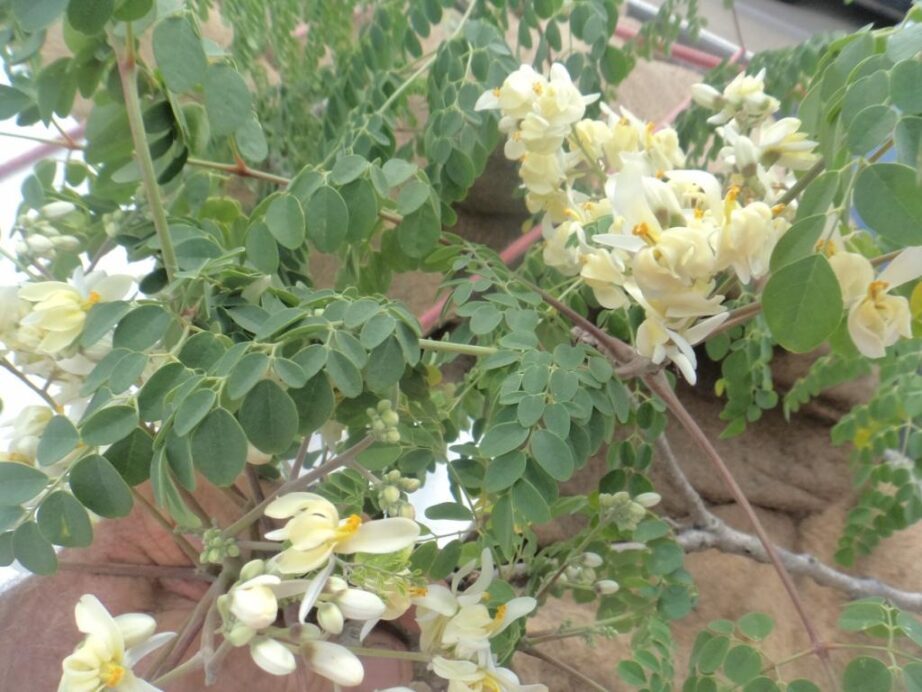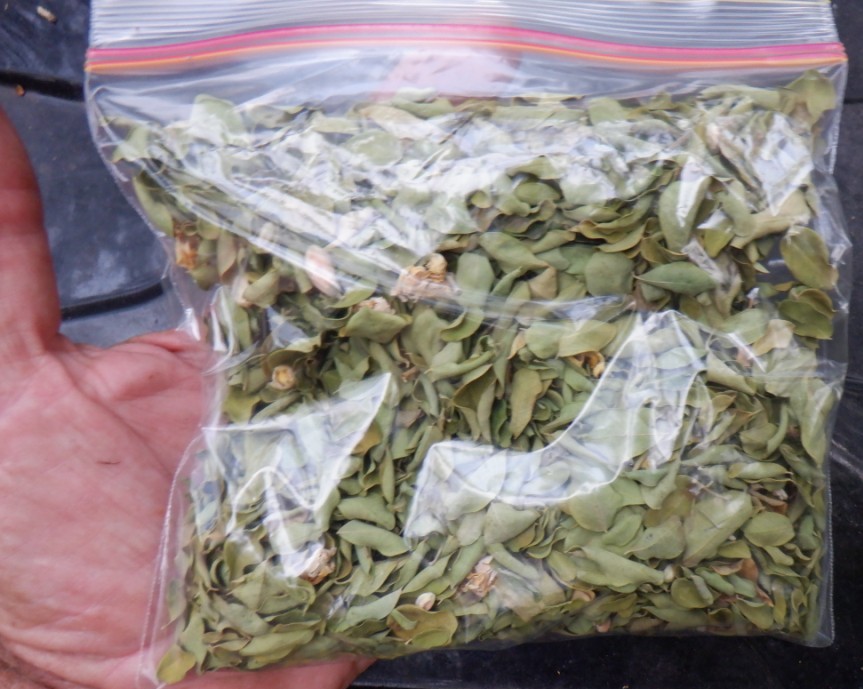
My notes herein may be duplicated as I have obtained the info from various sources. Please excuse if that is the case.Moringa oleifera, or the horseradish tree, is a pan-tropical species that is known by such regional names as benzolive, drumstick tree, kelor, marango, zija, mlonge, mulangay, nébéday, saijhan, and sajna. Over the past two decades, many reports have appeared in mainstream scientific journals describing its nutritional and medicinal properties. Its utility as a non-food product has also been extensively described, but will not be discussed herein, (e.g. lumber, charcoal, fencing, water clarification, lubricating oil). As with many reports of the nutritional or medicinal value of a natural product, there are an alarming number of purveyors of “healthful” food who are now promoting M. oleifera as a panacea. While much of this recent enthusiasm indeed appears to be justified, it is critical to separate rigorous scientific evidence from anecdote.
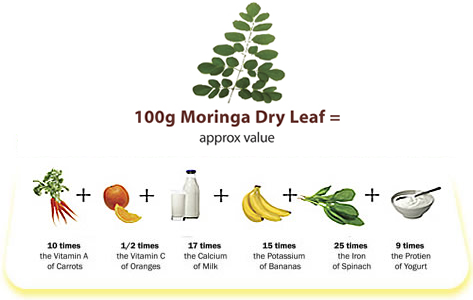
Those who charge a premium for products containing Moringa spp. must be held to a high standard. Those who promote the cultivation and use of Moringa spp. in regions where hope is in short supply must be provided with the best available evidence, so as not to raise false hopes and to encourage the most fruitful use of scarce research capital. It is the purpose of this series of brief reviews to: (a) critically evaluate the published scientific evidence on M. oleifera, (b) highlight claims from the traditional and tribal medicinal lore and from non-peer reviewed sources that would benefit from further, rigorous scientific evaluation, and (c) suggest directions for future clinical research that could be carried out by local investigators in developing regions. Moringa have been reported to have hypotensive, anticancer, and antibacterial activity.
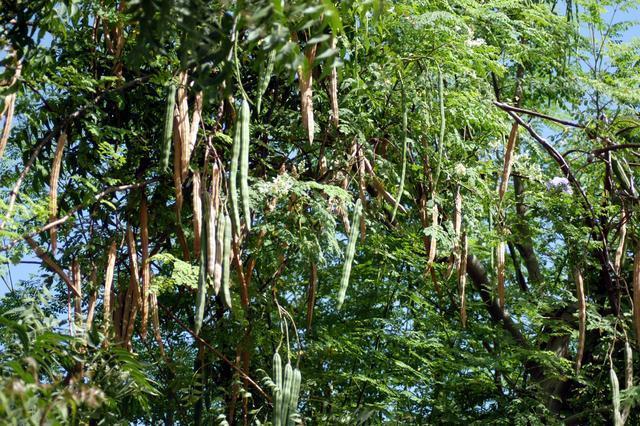
The moringa tree, Moringa oleifera, has probably been the most popular plant in ECHO’s(ECHO-European commission humanitarian office) seed bank of underutilized tropical crops. The tree is native to India but has been planted around the world and is naturalized in many locales. Moringa goes by many names. In the Philippines, where the leaves of the moringa are cooked and fed to babies, it is called “mother’s best friend” and “malunggay.” Other names for it include the benzolive tree (Haiti), horseradish tree (Florida), Nébéday (Senegal) and drumstick tree (India). There are about 13 species of moringa trees in the family Moringaceae. They are native to India, the Red Sea area and/or parts of Africa including Madagascar. Of these species, Moringa oleifera is the most widely known. In this document, the term ‘moringa’ refers to M. oleifera. All other species are referred to by their Latin name
Moringa PKM1 Oleifera Plan has capacity of High productivity (250-350 fruits / tree / year)
2.Uniform fruit length (1mt) -Easy
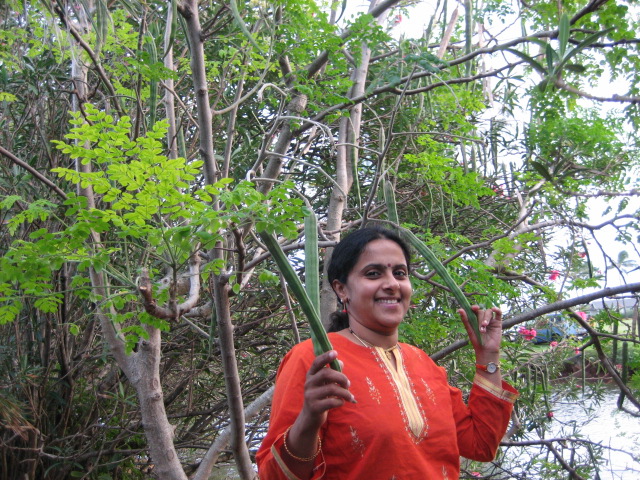
Botany
The Moringa oleifera Lam. is a small, fast growing, drought deciduous tree that ranges in height from 5-12 m with an open, umbrella shaped crown, straight trunk (10-30cm thick) with corky, whitish bark. The evergreen foliage (depending on climate) has leaflets 1-2 cm in diameter; the flowers are white or cream colored. The fruits (pods) are initially light green, slim and tender, eventually becoming dark
green, firm and up to 120 cm long, depending on the variety. Fully mature, dried seeds are round or triangular shaped, the kernel being surrounded by a lightly wooded shell with three papery wings. It tends to be deeply rooted, has a wide open typically-umbrella shaped crown and usually a single stem
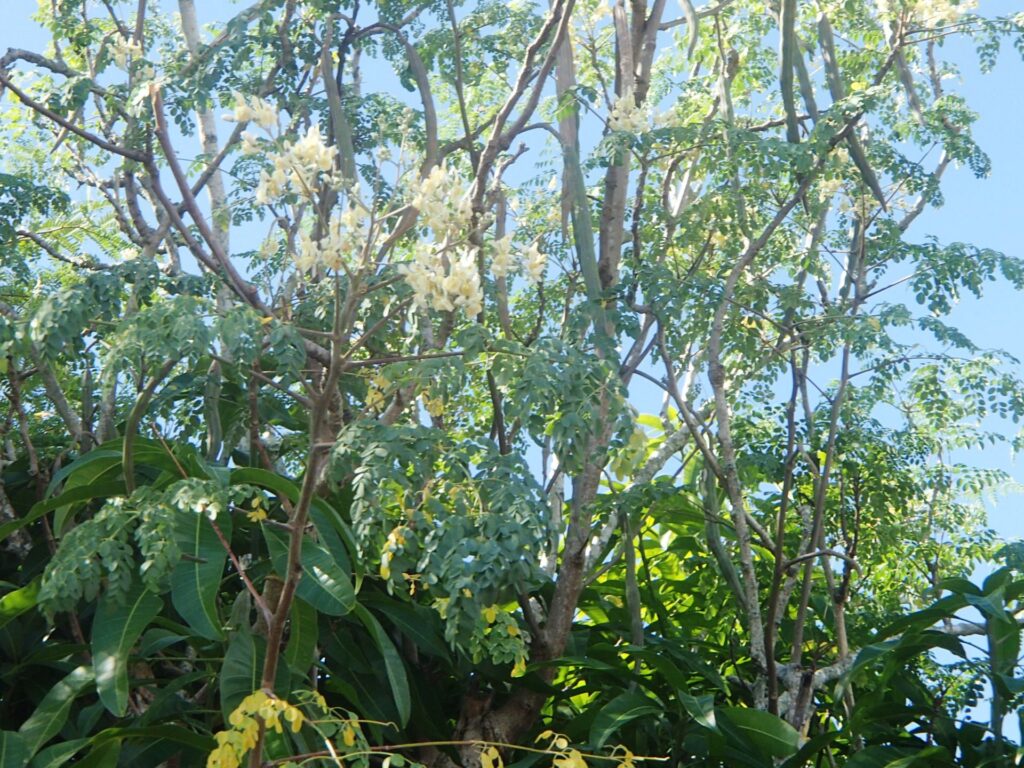
Cultivation
Moringa oleifera can be easily established by cutting or by seed. Seeds can be sown either directly or in containers and no seed treatment is required. The Plants rose from 1m cutting beat pods from the second year and growth on wards with maximum production at 4 to 5 years. In a favorable environment an individual tree can yield 50 to 70 kg of pods in one year. Originally considered a tree of hot, semiarid regions (annual rainfall 250–1500 mm) it has also been found to be well adapted to hot, humid, wet conditions with annual rainfall in excess of 3000 mm. However it does best where temperature ranges from 26 to 40°C and annual total rainfall at least 500 mm. It grows well from sea level to 1000m in elevation. Its big adaptability is also shown in the variety of soil conditions where it grows continuously under water stress.
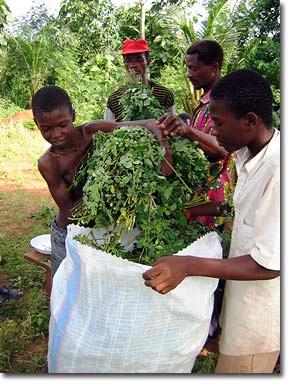
Climate and soil requirements
Moringa tolerates a wide range of environmental conditions. It grows best between 25 to 35oC, but will tolerate up to 48oC in the shade and can survive a light frost. The drought-tolerant tree grows well in areas receiving annual rainfall amounts that range from 250 to 1500 mm. Altitudes below 600 m are best for moringa, but this adaptable tree can grow in altitudes up to 1200 m in the tropics. Moringa prefers a well-drained sandy loam or loam soil, but tolerates clay. It will not survive under prolonged flooding and poor drainage. Moringa tolerates a soil pH of 5.0–9.0.
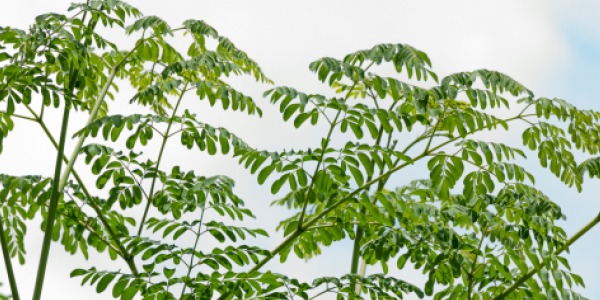
Planting methods
Moringa is planted either by direct seeding, transplanting, or using hard stem cuttings. Direct seeding is preferred when plenty of seed is available
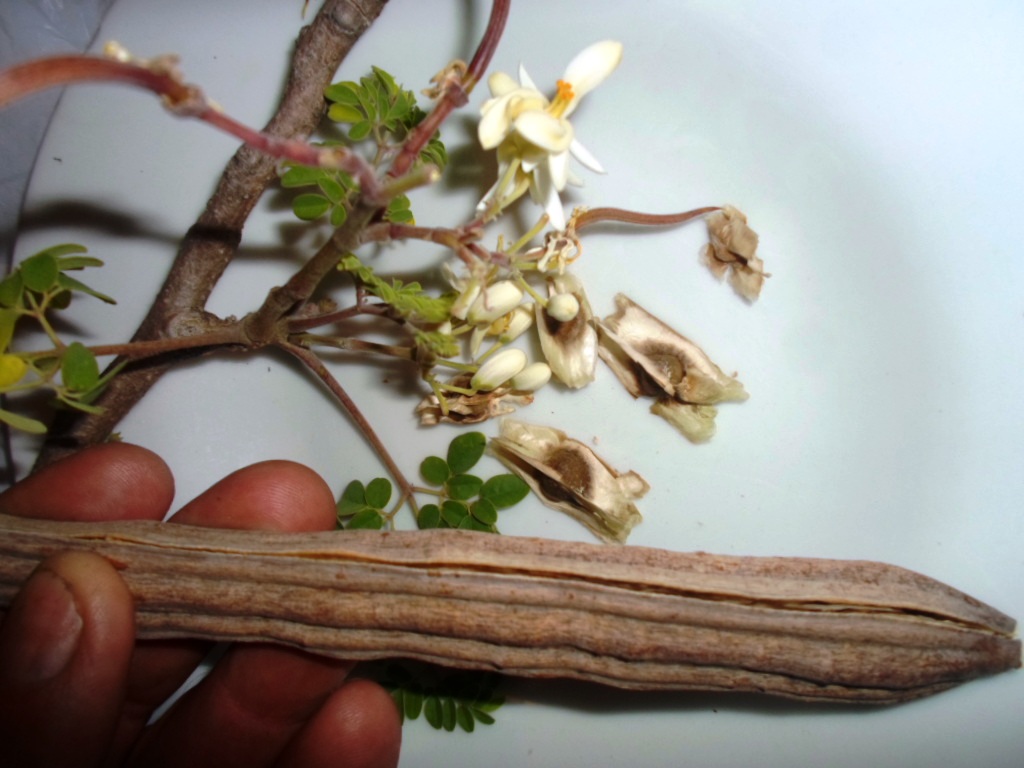
Seedling production
Seedlings can be grown in divided trays, individual pots, plastic bags, or seedbeds. Use of divided trays and individual containers is preferred because there is less damage to seedlings when they are transplanted. A 50-cell tray with cells 3–4 cm wide and deep is suitable. Fill the tray with a potting mix that has good water-holding capacity and good drainage. Use peat moss, commercial potting soil, or a potting mix prepared from soil, compost or rice hulls, and vermiculite or sand. AVRDC uses a mixture of67% peat moss and 33% coarse vermiculite. If you use non-sterile components, sterilize the mix byautoclaving or baking at 150oC for 2 hours.
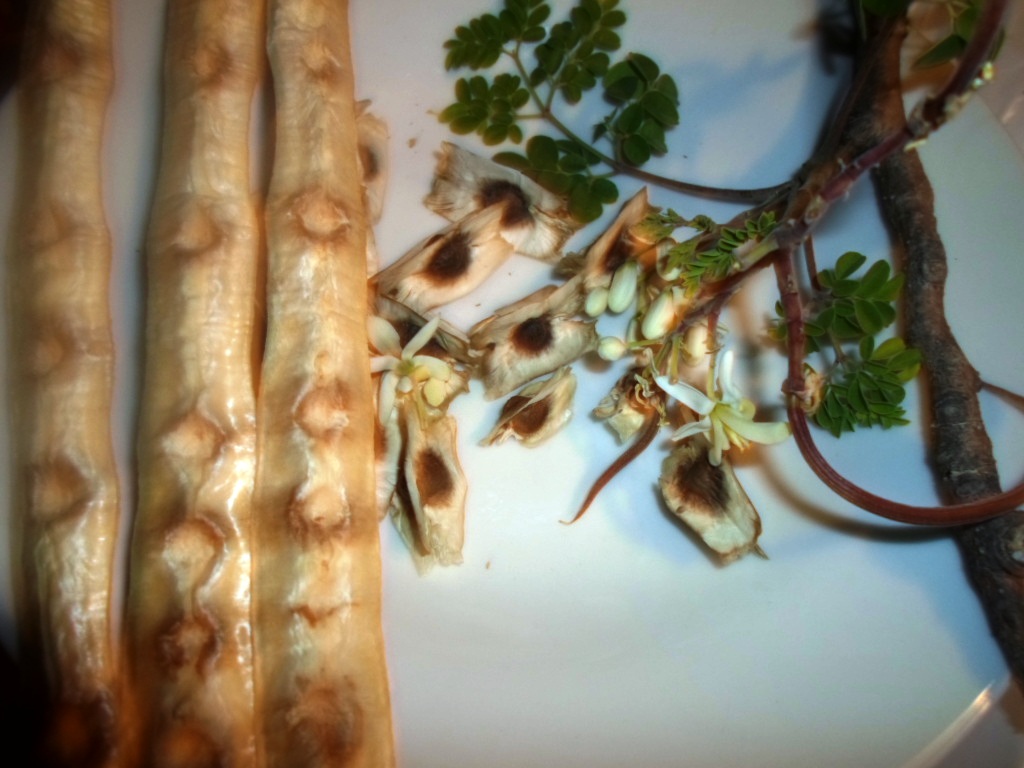
Grow seedlings under shade or in a screenhouse with 50% shade. Sow two or three seeds per cell. One week after germination, thin to the strongest seedling. Irrigate seedlings thoroughly every morninga or as needed (moist, but not wet), using a fine mist sprinkler to avoid soil splash and plant damage. Pots or bags may be used to grow larger transplants.
Fill the containers (0.5–1.0 kg by volume) with potting mix similar to that used in seedling trays. If potting mix is not available, use 3 parts soil to 1 part sand. Sow two or three seeds per pot or bag. One week after germination, thin to the strongest seedling. These plants are transplanted in the field after they reach 50 cm high
Using stem cuttings
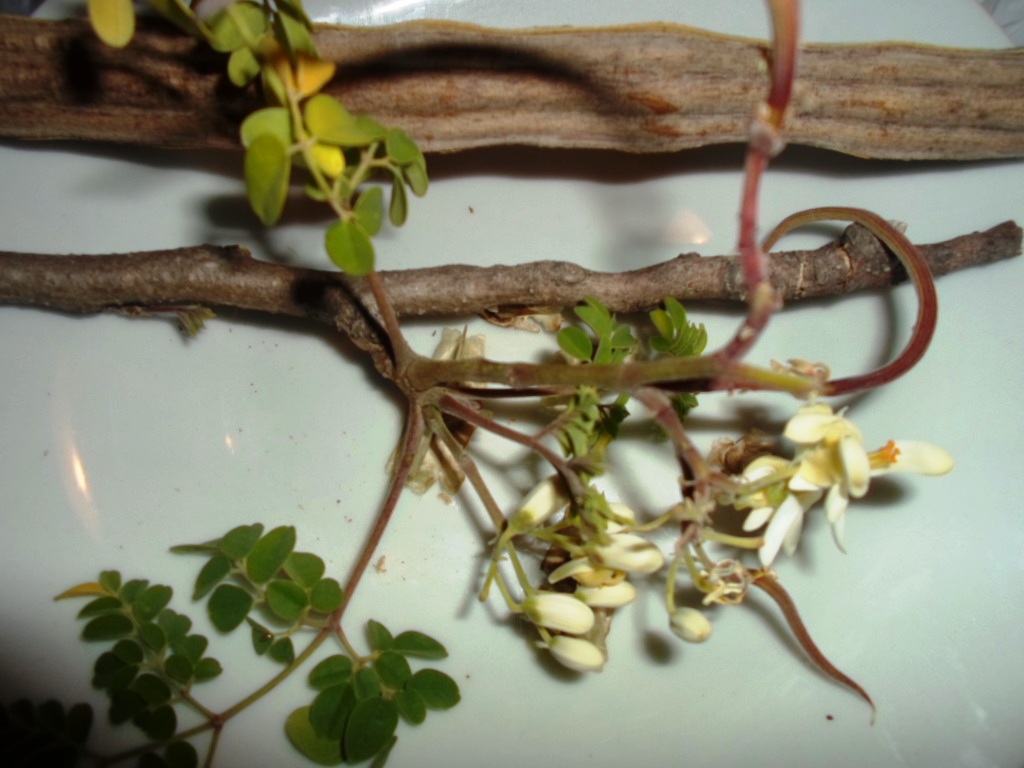
Compared to trees planted from seed, trees from stem cuttings grow faster but develop a shallow root system that makes them more susceptible to moisture stress and wind damage. Make stem cuttings using branches of a tree that is at least one year old. Use hard wood and avoid using young green stem tissue. Cuttings can be 45–150 cm long with diameters of 4–16 cm. Cuttings can be dried in the shade for three days before planting in the nursery or in the field. Cuttings are then planted directly or planted in plastic pots or bags in the nursery or greenhouse.
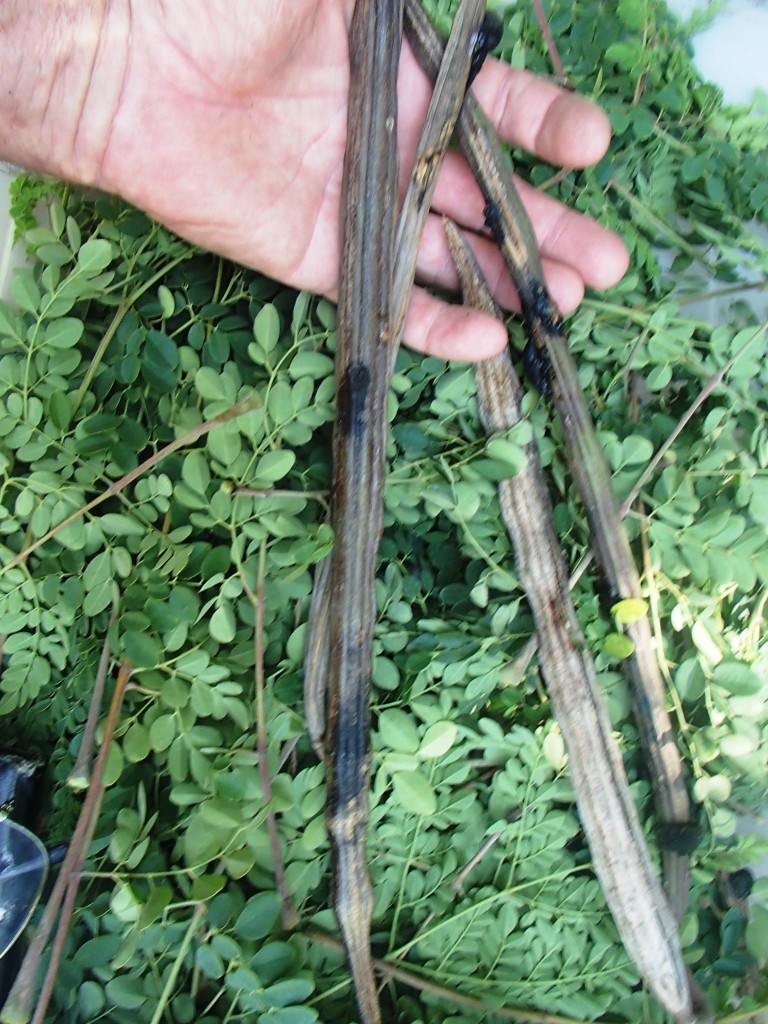
DRUMSTICK OR MORINGA TREE Moringa oleifera is the scientific name for the so very popular drumstick tree (Hindi – saijna, Tamil – murungai). Grown in almost all tropical and sub-tropical regions, this fast-growing, drought-resistant tree is native to southern foothills of the Himalayas in northwestern India. According to the Sushruta Samhita, cultivation of this tree in India dates back many thousands of years. The tree grows rapidly even in poor soils; it is well adapted to droughts, and is able to reach up to 15 m in height. The flowers and the fruits appear twice each year, and seeds or cuttings are used to propagate the tree. All parts of Moringa are used in some form or the other. Its leaves, immature pods (drumstick), seeds and flowers, and oil pressed from mature seeds are generally used as or in food.
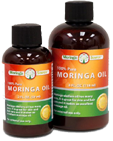
For example, flowers of M. oleifera are rich in calcium, potassium and antioxidants, and are used in various dishes. • Leaves are an excellent source of protein with 100 g of fresh raw leaves providing 9.8g of protein. • Fresh pods and seeds are a good source of a mono-unsaturated fatty acid, oleic acid. • The seeds are used to treat allergies, inflammation, bacteria, neuralgia, abdominal tumors, and fever. • This multipurpose tree is one of those plants that are compatible for sustainable agriculture. • Moringa is used as forage for livestock. • The tree parts are used as adjuvant (agent that enhances the immune response to an antigen) in modern medicine. •
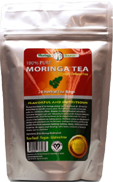
Many parts and extracts of M. oleifera,including root bark, are used for treating various ailments such as diabetes, hypertension, inflammation and infectious diseases. • In traditional medicine it is used as anthelmintic, and also for treatment of diabetes, cardiovascular disease, ulcers, and gastrointestinal problems. •
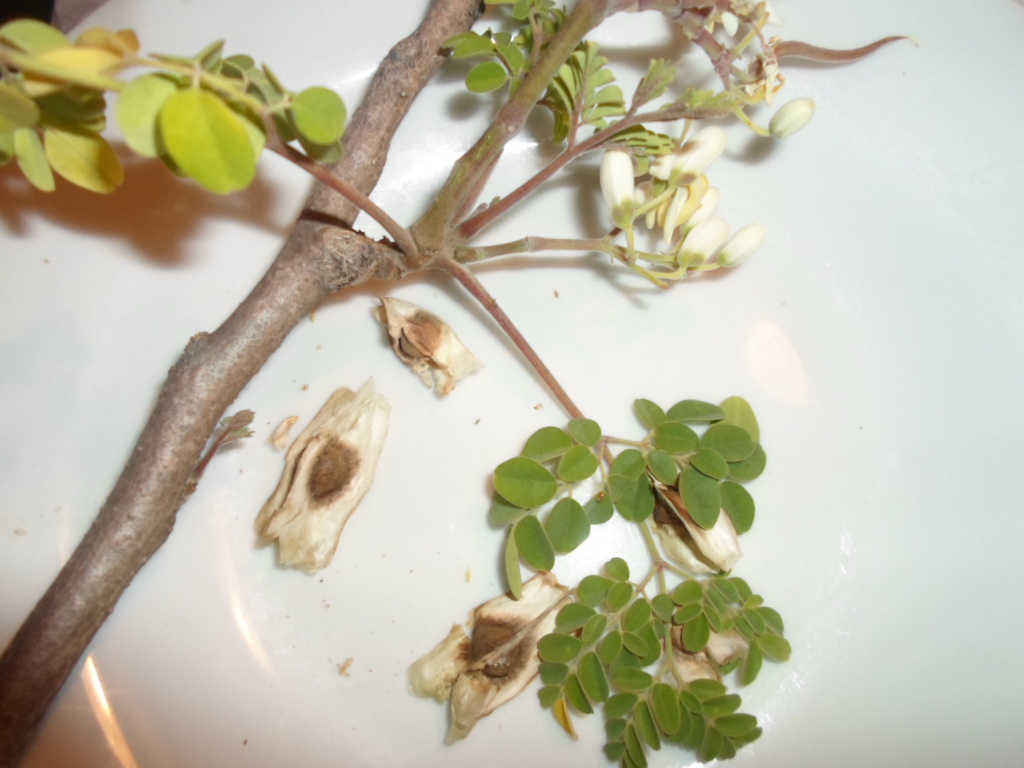
The plant is used as an aphrodisiac to stimulate sex drive. • Moringa leaf can increase breast milk production in the early period after childbirth. • Moringa oil is used in traditional medicine in treating snakebites or wounds. It is also used in hair care products and also as machine lubricants.
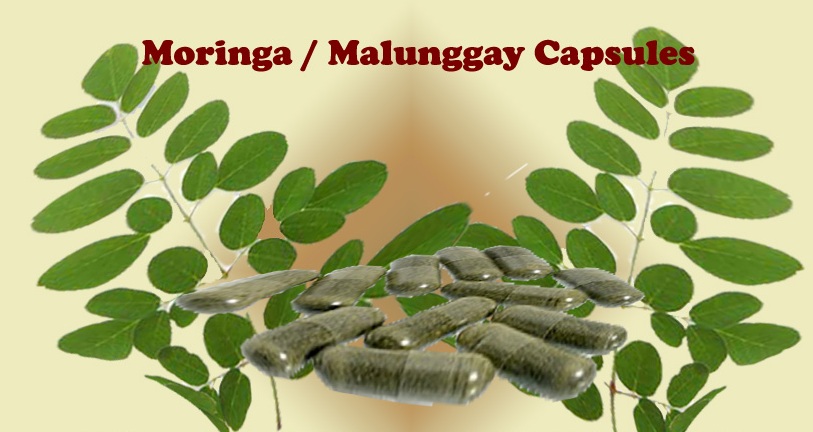
• The seed cake left after oil extraction is used as fertilizer. Moringa tree has been referred to as the ‘Miracle tree’ for its versatility and experts all over the world believe Moringa to be an ideal plant to combat under-nutrition because of its nutritional benefits and availability.
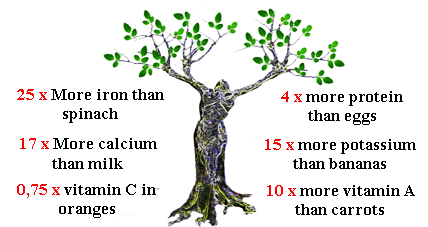
It has been estimated that fresh leaves of moringa plant contain – • 4 times the vitamin A of carrots • 7 times the vitamin C of oranges • 4 times the calcium of milk • 3 times the potassium of bananas • 2 times the protein of yogurt It is also a rich source of iron having almost three-fourth of the amount present in spinach leaves. Thus, Moringa oleifera provides a variety of vitamins, minerals and protein amino acids with significantly less fat, less carbohydrate and fewer calories. Given its health and other benefits, Moringa is no wonder called the Tree of Life.
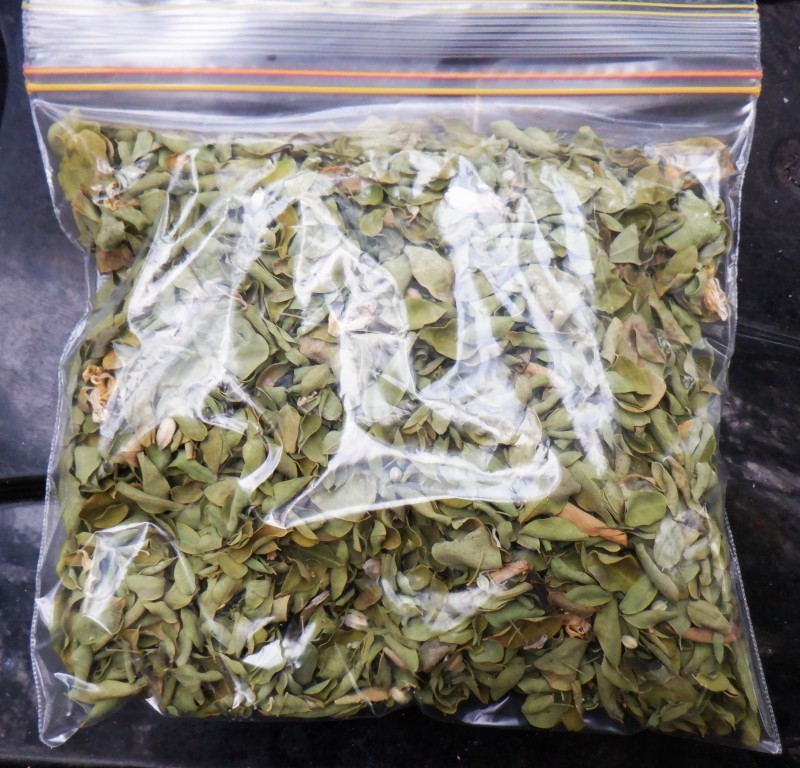
LEAF 30 GRAMME BAG SHIPPED AUSTRALIA WIDE. BUY PRICE
+ POST & PACK OF $6.55 FOR UP TO 6 BAGS
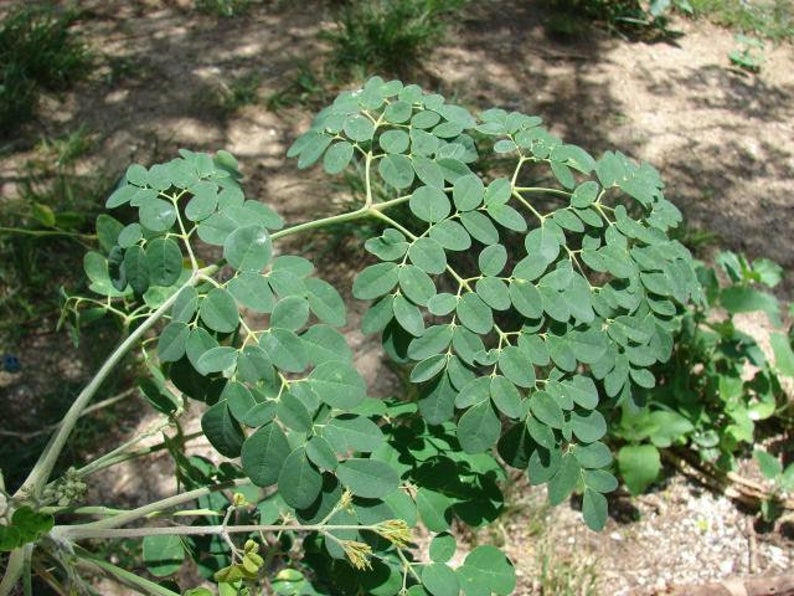
‘Virtually all of the hungry, many of the overweight, and others of normal weight are debilitated by a deficiency of essential vitamins and minerals.’ – World Health Organization
The solution to this problem may actually lie with Moringa oleifera, a tree that has all the vitamins and minerals, and all the amino acids needed for a healthy body.
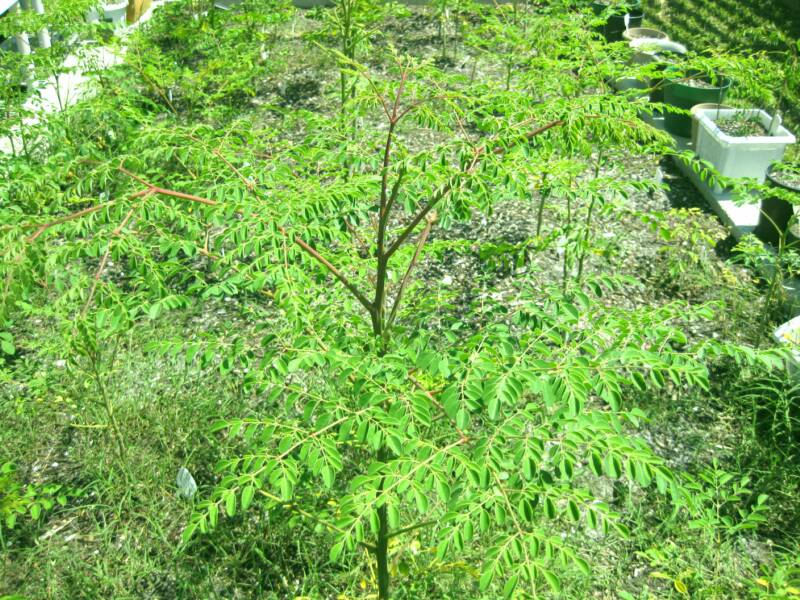
Moringa oleifera is the scientific name for the so very popular drumstick tree (Hindi – saijna, Tamil – murungai). Grown in almost all tropical and sub-tropical regions, this fast-growing, drought-resistant tree is native to southern foothills of the Himalayas in northwestern India. According to the Sushruta Samhita, cultivation of this tree in India dates back many thousands of years.
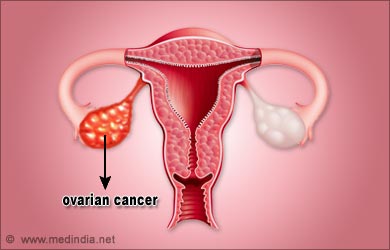
The tree grows rapidly even in poor soils; it is well adapted to droughts, and is able to reach up to 15 m in height. The flowers and the fruits appear twice each year, and seeds or cuttings are used to propagate the tree.
All parts of Moringa are used in some form or the other. Its leaves, immature pods (drumstick), seeds and flowers, and oil pressed from mature seeds are generally used as or in food. For example, flowers of M. oleifera are rich in calcium, potassium and antioxidants, and are used in various dishes.
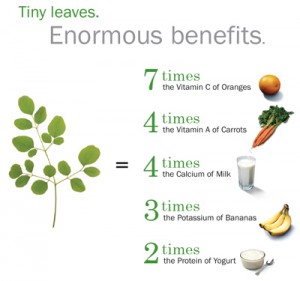
• Leaves are an excellent source of protein with 100 g of fresh raw leaves providing 9.8g of protein.
• Fresh pods and seeds are a good source of a mono-unsaturated fatty acid, oleic acid.
• The seeds are used to treat allergies, inflammation, bacteria, neuralgia, abdominal tumors, and fever.
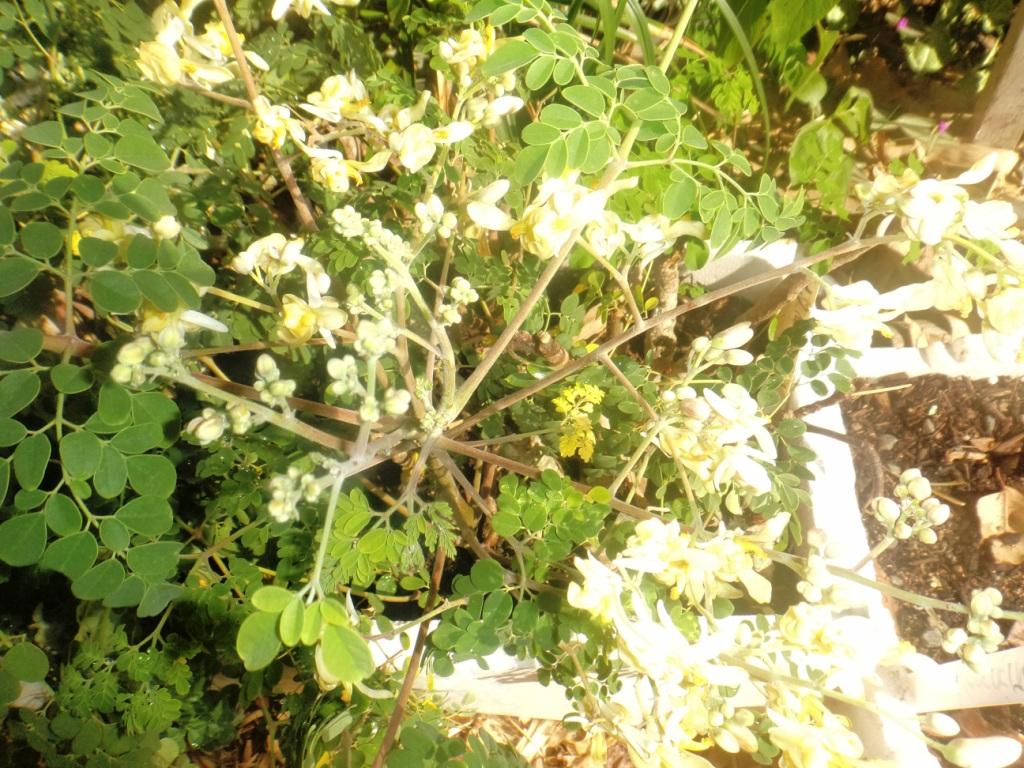
• This multipurpose tree is one of those plants that are compatible for sustainable agriculture.
• Moringa is used as forage for livestock.
• The tree parts are used as adjuvant (agent that enhances the immune response to an antigen) in modern medicine.
• Many parts and extracts of M. oleifera,including root bark, are used for treating various ailments such as diabetes, hypertension, inflammation and infectious diseases.
• In traditional medicine it is used as anthelmintic, and also for treatment of diabetes, cardiovascular disease, ulcers, and gastrointestinal problems.
• The plant is used as an aphrodisiac to stimulate sex drive.
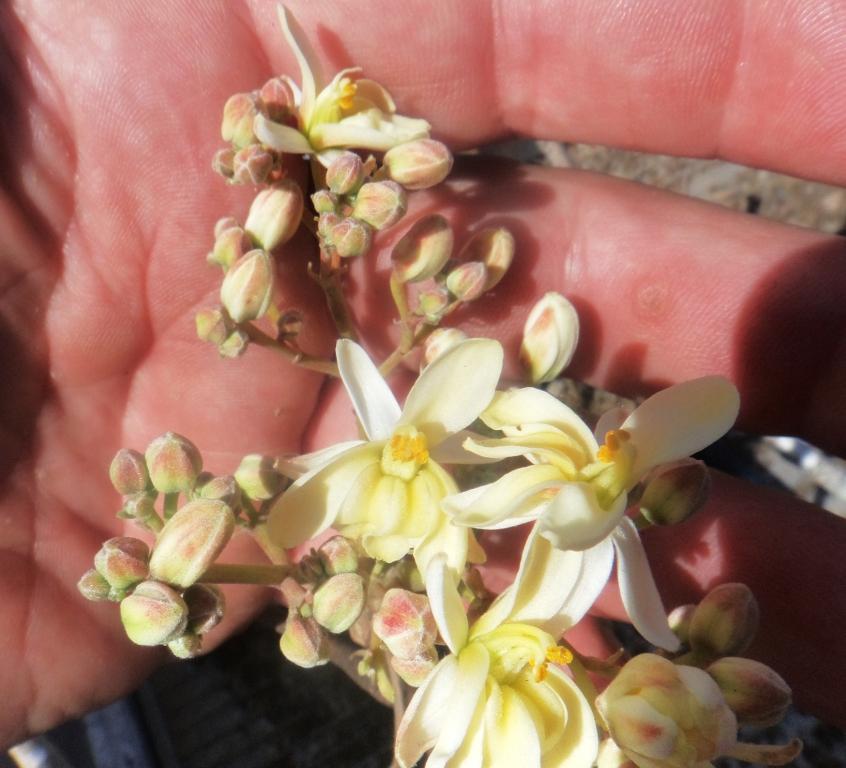
• Moringa leaf can increase breast milk production in the early period after childbirth.
• Moringa oil is used in traditional medicine in treating snakebites or wounds. It is also used in hair care products and also as machine lubricants.
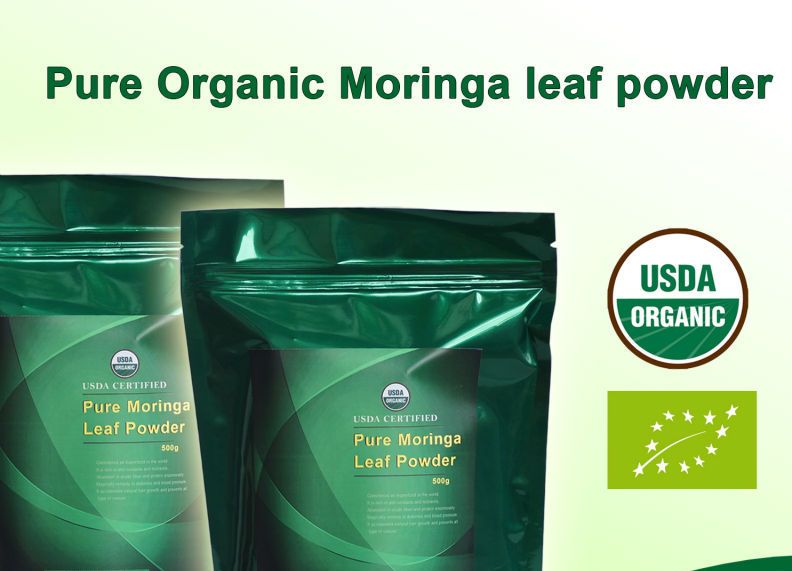
• The seed cake left after oil extraction is used as fertilizer.
Moringa tree has been referred to as the ‘Miracle tree’ for its versatility and experts all over the world believe Moringa to be an ideal plant to combat under-nutrition because of its nutritional benefits and availability. It has been estimated that fresh leaves of moringa plant contain –
• 4 times the vitamin A of carrots
• 7 times the vitamin C of oranges
• 4 times the calcium of milk
• 3 times the potassium of bananas
• 2 times the protein of yogurt
It is also a rich source of iron having almost three-fourth of the amount present in spinach leaves.
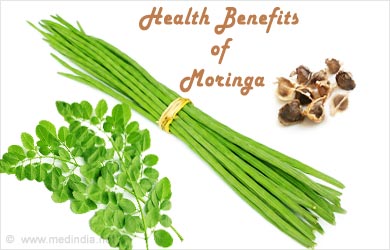
Thus, Moringa oleifera provides a variety of vitamins, minerals and protein amino acids with significantly less fat, less carbohydrate and fewer calories. Given its health and other benefits, Moringa is no wonder called the Tree of Life.
Any questions or if buying, contact me HERE

Read more: Moringa | Drumstick Tree – Health Benefits and Side Effects http://www.medindia.net/patients/lifestyleandwellness/moringa.htm#ixzz3TfIECiY7

